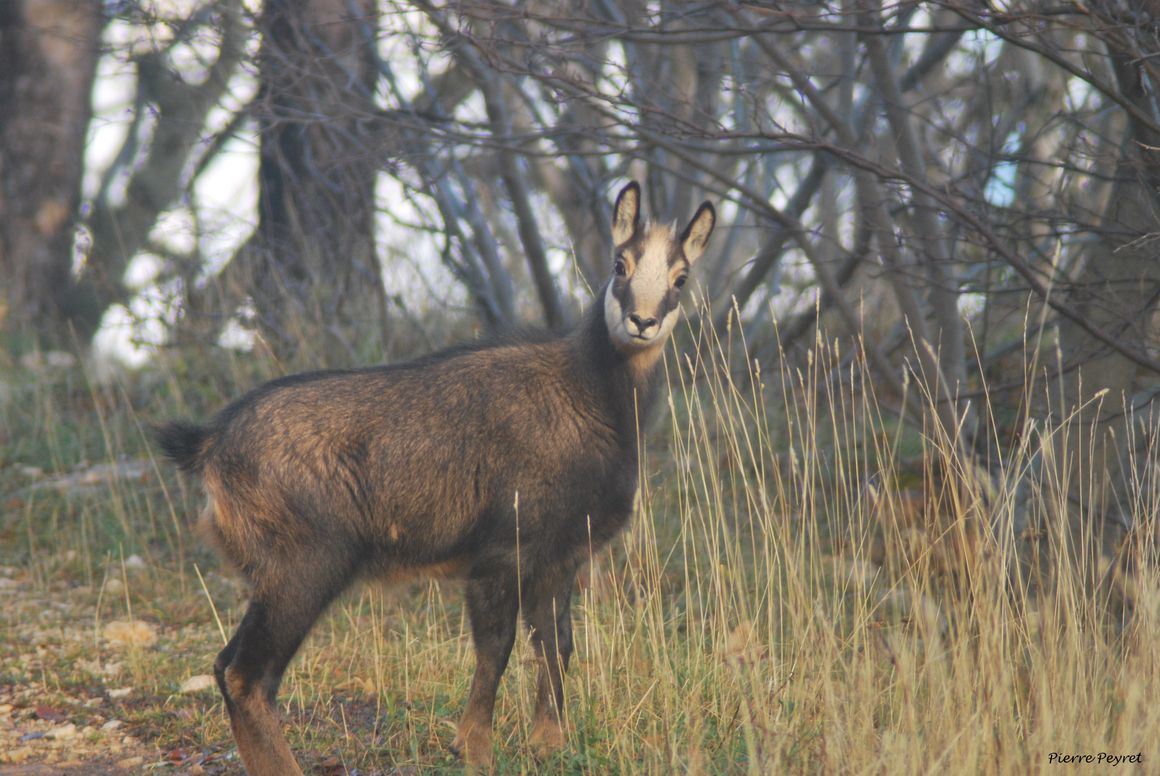Many of them have disappeared, but on the slopes of the Ventoux, if the steep path doesn't scare you, you can observe a strange mountain goat more commonly known as the chamois (Rupicapra).
The Chamois du Ventoux, symbol of the mountain people!
If the last hunter-gatherers of the Ventoux could talk about the animals they came across or even their most distant ancestors of the Paleolithic, they would make our contemporaries incredulous or stunned. The Wild Cat, the Lynx of the caves, the Hyena of the caves, the cave bear (to be discovered at the Réquien museum in Avignon, the paleontological research work of Evelyne Crégut-Bonnoure, a real delight), the Wild Donkey, the Saiga Antelope, the Marmot, the Wild Boar, the Giant Stag, the Reindeer, the Ibex... and so on, lived in our mountains and valleys.
A strange mountain goat...
Many of them have disappeared, but on the slopes of the Ventoux, if the steep path doesn't scare you, you can observe a strange mountain goat more commonly known as the chamois (Rupicapra rupicapra).
On the northern and shady slopes, because it drinks little and thus avoids dehydration, you can discover it perched on a dizzying rocky bar at the turn of the GR4 in the Réserve Biologique Intégrale du Ventoux.
You will often see a female followed (with her capercaillie of the year) and a young eternal or eternalou (adolescent) scraping the snow with their hooves to dislodge what waits until spring, mosses, sleeping clumps of ranunculus, saxifrages, toadflax, grasses.
Throughout the seasons
December is particularly active, between the young goats that discover their first snow by jumping as if they were crazy, and the rut which is active and gives the opportunity for incredible chases and even (rare) fights between competing males.
Throughout the seasons, you will see the coat vary to dark winter coat, the shaggy spine of rutting males, the donkey ears of the year's goats, the sharp horns of the males and the slender necks of the females perched in improbable vires.
You will have to get up early to see it active, although it is not very shy in the Ventoux.
But don't believe that it stays perched up there all year round. Contrary to popular belief, it can easily adapt to the forest environment as far as the Ventoux foothills and I have even had the road cut in two jumps when I passed by Le Barroux. The winegrowers sometimes cross them around their farms.
The chamois is the symbol of the mountain people in the Ventoux.
Text of the story: Pierre Peyret

